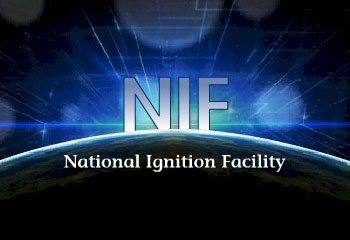When the term “nuclear power” is used today, it is actually referring to reactors that utilize nuclear fission to generate electricity. Scientists have been working for decades to develop reactors that would use nuclear fusion. Currently there are at least six companies in the U.S. working on fusion reactors that are expected to be smaller, cheaper and safer than nuclear fission reactors with the added benefit of cheap fuel and no pollution or radioactive waste.
Unfortunately, a sustained nuclear fusion reaction that could be used in a commercial power generator is not easy to achieve. Enormous temperature and pressure are needed. Often very powerful magnetic fields are used to confine a superheated plasma but it is difficult to control the plasma and keep it from touching the walls of the containment vessel and dissipating. There is a great deal research in fundamental plasma physics going on as part of the work on nuclear fusion power generation.
The University of Michigan Center for Laser Experimental Astrophysical Research (CLEAR) is conducting a study which indicates that heat plays an important role in the mixing of materials during a fusion reaction. This factor has not received sufficient attention to date. The researchers are studying nuclear fusion in supernovas as well as small-scale fusion reactions generated in the lab. A key part of fusion reactions in both the supernovas and in the lab is something called Rayleigh-Taylor mixing.
When a star goes supernova, plasmas of elements such as iron, carbon, helium and hydrogen are hurled outward. Supernova remnant clouds are created by the dynamic mixing of plasmas with different densities which is called Rayleigh-Taylor instability.
The U of M scientists have concluded that the methods that have been used to model the plasma mixing that takes place in a supernova are incomplete. Energy fluxes that cause heating in the cloud of plasma have an important affect on the mixing. In spite of this, Rayleigh-Taylor instability has not been taken into consideration in astrophysical modeling.
Carolyn Kuranz, is the director of U-M's CLAER and an associate research scientist of climate and space sciences and engineering. She recently said, “Rayleigh-Taylor has been studied for over 100 years. But the effects of these high energy fluxes, these mechanisms that cause heating, have never been studied.”
The U of M team found that with the increase in energy fluxes and the resulting heating, the amount of mixing and the Rayleigh Taylor instability were reduced. Kuranz said, “These heating mechanisms reduce mixing and can have a dramatic effect on the evolution of a supernova. In our experiment, we found that mixing was reduced by 30 percent and that reduction could continue to increase over time.”
To research the way that heating affects a fusion reaction, the U of M researchers booked time on the largest laser in the world at the National Ignition Facility in Lawrence, CA. This facility uses lasers and heat to create a momentary fusion reaction. This creates conditions that resemble those in the cloud left over from a supernova explosion. Kuranz said, “Rayleigh-Taylor is theorized to occur in all Type II supernovae and there is evidence that these stars are turning themselves 'inside out' when they explode. These experiments help us learn what's going on inside.”
It is believed that observation of supernovas and controlled nuclear fusion reactions in the laboratory will have wide applications in the quest for commercial nuclear fusion power generation. Among other things, this research should help maximize the efficiency of energy generation.
Kuranz said, “Right now, all of our nuclear plants are fission plants. But fusion tends to be more efficient and yield less nuclear waste. Instead of using plutonium or uranium, as with fission, fusion can be generated using lighter elements such as hydrogen isotopes. We have a nearly unlimited source of fusion fuel on Earth.”
